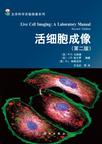活细胞成像
出版时间:2012-5 出版社:科学出版社 作者:杨梅 页数:289 字数:459875 译者:方玉达
Tag标签:无
内容概要
《活细胞成像(第二版)》旨在探讨英语冠词语义特征和相关的语境因素如何交互作用并影响英语冠词二语习得。作者从语言涌现论角度出发,提出英语冠词习得过程是一个复杂适应系统,由含有众多因素和主体的子系统组成,冠词习得是各类主客体因素相互影响和共同作用的结果。研究主要关注语义子系统和语境子系统在不同层面的交互作用及其对二语学习者冠词习得的影响,揭示了英语冠词替代型误用产生的原因,对英语冠词教学具有一定的现实意义。《活细胞成像(第二版)》首次在涌现论框架下研究英语冠词二语习得,为涌现理论在语言和语言习得领域的应用提供了实证基础,有利于促进语言涌现理论的进一步发展。
作者简介
无
书籍目录
Contents序前言AbstractvAcknowledgementsChapter 1 Introduction1.1 Goals of research1.2 Research background1.3 Key research questions1.4 Organization of the bookChapter 2 Semantic and Pragmatic Analysis of English Articles:An Overview2.1 Introduction2.2 Semantic analysis of English articles2.2.1 Definiteness and English articles2.2.2 Specificity and English articles2.2.3 Semantic complexity of English articles2.3 Pragmatic analysis of English articles2.3.1 The context-driven nature of semantic features2.3.2 P-sets(Hawkins,1978,1991)2.3.3 Relationship between semantic features and contextual factors2.4 SummaryChapter 3 L1 and L2 Acquisition of English Articles:A Critical Review3.1 Introduction3.2 Tasks facilitating the acquisition of English articles3.3 L1 developmental studies3.3.1 Maratsos's(1976)egocentricity account3.3.2 Wexler's Lack of Maximality Presupposition account3.3.3 The specific/non-specific effect account3.4 Studies of L2-English article acquisition3.4.1 Semantic Wheel and the classification of NP types3.4.2 L2 article acquisition studies under the Bickertonian framework3.4.3 Jarvis's(2002)study from a discourse perspective3.4.4 Fluctuation Hypothesis and Syntactic Misanalysis Account3.5 Comments on previous research3.6 SummaryChapter 4 Interaction and L2-English Article Acquisition:Questions and Hypotheses4.1 Introduction4.2 Interaction under the emergentist framework4.2.1 Emergentism in SLA4.2.2 Interaction:importance and ignorance4.2.3 Outlining the interactions to be studied4.3 Exploring interaction in detail4.3.1 Interaction of different semantic features4.3.2 Interaction of different contextual factors4.3.3 Interaction of semantic features with contextual factors4.4 Research questions and hypotheses4.5 SummaryChapter 5 Study 1:Elicited Production5.1 Introduction5.2 Predictions5.3 Methodology5.3.1 Participants5.3.2 Materials and procedures5.3.3 Data coding procedures5.4 Results5.4.1 The forced elicitation task5.4.2 The written interview5.5 Discussion5.5.1 The role of specificity in L2 article choices5.5.2 Different effects of contextual factors5.5.3 Interaction of semantic features with contextual factors5.6 SummaryChapter 6 Study 2:Acceptability Judgment6.1 Introduction6.2 Background and predictions6.2.1 Background6.2.2 Predictions about uniqueness6.2.3 Predictions about hearer knowledge6.2.4 Predictions about specificity6.3 Methodology6.3.1 Participants6.3.2 Task and materials6.3.3 Procedure6.4 Results6.4.1 Computing uniqueness6.4.2 Uniqueness vs.existence6.4.3 Hearer knowledge6.4.4 Specific vs.non-specific6.5 Discussion6.5.1 The asymmetry of performance in different contexts6.5.2 The influence of partitivity6.5.3 Influence of specificity in article comprehension6.5.4 Semantic knowledge contributes to context sensitivity6.6 SummaryChapter 7 General Discussion and Conclusions7.1 Introduction7.2 Major findings7.3 General discussion7.3.1 Effects of specificity and partitivity on L2 learners' knowledge of definiteness7.3.2 Factors influencing L2 learners' context-sensitivity7.3.3 Interaction of semantic features with contextual factors7.4 Conclusions7.4.1 The Interaction Account:a summary of the study7.4.2 Implications of the present study7.4.3 Limitations and suggestions for further research7.5 SummaryReferencesAppendixesAppendix A Article-choice Test(Version 1)Appendix B Article-choice Test(Version 2)Appendix C The Answer Sheet of Article-choice TestAppendix D The Consent Form for Study 2Appendix E Test Items of Study 2Appendix F L2 Learners' Mean Rating of Items in Study 2Appendix G Native Speakers' Mean Rating of Items in Study 2List of Tables2.1 Semantic complexity of English articles3.1 The classification of NP types under the Semantic Wheel Model3.2 Predicted article choices in L2-English(the Fluctuation Hypothesis)3.3 Predicted article choices in L2-English(based on the Fluctuation Hypothesis)3.4 Predicted article choices in L2-English(Trenkic's view)5.1 Predicted article choices in L2-English(the present study)5.2 Biodata of participants of Study 15.3 Reason types and examples5.4 Native speaker results for Test Version 1(N=7)5.5 Native speaker results for Test Version 2(N=7)5.6 L2-learner results for Test Version 1(N=27)5.7 L2-learner results for Test Version 2(N=28)5.8 Article choices in [+definite,+spec,-ESK] contexts5.9 Descriptive data of a-overuse in [+definite,+spec,-ESK] contexts5.10 Reasons provided by L2 learners and native speakers5.11 First mention as reasons provided for L2 article choices6.1 Biodata of the participants of Study 26.2 Features of each category6.3 Mean ratings by category(1=unacceptable,4=acceptable)6.4 Mean ratings of Categories 1 and 6(with or without hearer knowledge)6.5 Mean ratings in Categories 6 and 76.6 Low proficiency L2 learners' mean rating in Categories 6 and 77.1 The distinction of the and a(Translated from Zhang,2007:67)List of Figures3.1 Article grouping cross-linguistically(Two articles)5.1 Difference of a-overuse between L2 learners and native speakers in [+definite,+spec,-ESK] context(Version 1)5.2 Difference of a-overuse between L2 learners taking version 1 and version 2 in [+definite,+spec,-ESK] context(target:the)5.3 Differences between L2 learners and native speakers concerning three major reasons5.4 Categories of reasons provided by L2 learners and native speakers5.5 Reasons provided for correct article choices5.6 Reasons provided for substitution errors of English articles5.7 Detailed results of reasons associated with definiteness5.8 Detailed results of reasons associated with specificity6.1 Comparing performance across Categories 1,2,and 36.2 Comparing performance across Categories 1 and 2 vs. 4 and 56.3 Comparing performance across Category 1 vs. 6
章节摘录
版权页: 插图: 活细胞的二维结构照明 OMX系统的3D-SIM能够将传统荧光显微镜的分辨率提高一倍。但是,整套技术仍然有两个比较大的缺陷。①在3D- SIM中,为了获取一张照片,需要在3个角度上改变5个照明相位,一共拍摄15张照片。因此在拍摄过程中,光漂白比较严重,获取最终照片的速度也比较慢。由于采用旋转的光栅以提供不同角度上的结构照明,整个系统的成像速度更加缓慢,光栅旋转一个角度大致需要2s。为了保证图像重建的准确性,在成像过程中,样品的移动范围不能超出100nm,因此,目前的OMX系统,获取一个z轴光学切片系列的最短时间为lOs,在这段时间内,细胞内容物的移动范围往往超出100nm。这个缺陷可以使用两个方法解决,一个方法是使用全内反射荧光(TIRF)的方法以获取单层的图像,在这种情况下,获得一张最终照片只需要在3个角度3个相位上拍摄9张照片。另一个方法是使用光线调制器,衍射光栅角度的改变可以不依赖于光学部件的物理旋转。结合这两种方法,获取一张二维TIRF超高分辨率照片的时间可以低于100ms (Kner et al.2009)。 TIRF TIRF可以实现100nm的z轴分辨率,同时大幅度减少背景的干扰。它通过光线在盖玻片和样品之间发生全反射时,照射全反射界面上样品。在全反射发生的界面上,会在与盖玻片平行的方向上产生消逝波,而且消逝波的强度随着离开界面距离指数衰减(第36章)。多波长TIRF系统已经在Sedat实验室的OMX系统上安装,它将传统的宽场照明导人多波长单模光纤实现照明。通过改变聚焦平面的位置,它可以快速改变入射角以实现不同波长的激发光在同一焦平面上实现全内反射成像。 3D TIRF 由于OMX系统可以非常精确地控制发生全反射时的临界角,因此使用OMX系统可以在大于临界角的一系列角度上获得TIRF图像。使用这种方法,逐渐照射离界面较远的样品,获得一系列z轴光学切片的图像。后期的图像处理使得图像的z轴分辨率可以达到很高。目前,使用该技术可以获得z轴分辨100nm,厚度1μm的样品图像。 活细胞成像中的图像处理 OMX系统的首要设计目标就是在快速观察活细胞的过程中,在有限的照明强度和很短的曝光时间下,仍然能够收集到足够的信号以获得最大的信噪比。分析快速成像过程中产生的数据则需要物体识别和跟踪,以跟踪快速运动而且信噪比有限的颗粒(Jaqaman et al.2008)。这些识别和定量分析工具对活细胞成像至关重要(第13、15、16章)。 另外一个未来极有前途的改进方向是使用图像处理工具改善活细胞成像中信号的信噪比和随后的分析。OMX系统获得的三维图像信息,利用去卷积技术,根据点扩散函数计算样品中焦平面信号的位置,进一步提高信噪比(Swedlow et al.1997; Wal-lace et al.2001; Parton and Davis 2006)。此外,采用去噪声的算法也可以极大的改善图像的质量。去噪声的算法依据样品信号在二维或者三维空间有规律的分布,而噪声信号则无规律的分布这一特性,从而过滤掉无规律的信号。对于二维信号,去噪声相对简单,常用高斯或者中值滤波加以处理。对于三维信号,由于其本身具有的空间位置的信息,则可以进一步提高信噪比。最近,更加先进的算法也陆续被开发出来。将去噪声技术应用于四维成像中,图像的信噪比可以得到进一步提高。
编辑推荐
《生命科学实验指南系列:活细胞成像(第2版)》可以作为活细胞成像的入门读物,也可以作为一线科研人员的理论基础读物和具体实验步骤指南。同时,《生命科学实验指南系列:活细胞成像(第2版)》还可以作为活细胞成像课程的教科书。
图书封面
图书标签Tags
无
评论、评分、阅读与下载
用户评论 (总计5条)
- 图很漂亮,很多信息,实用性强。
- 这本书非常不错,做活细胞成像的可以好好看看,很有帮助。
- 很好的书,帮助很大,书运输的过程中有些损坏,不过速度很快,内容好不影响心情,5星
- 这本书是冷泉港实验室整理编辑的一本有关细胞成像的书,很全,也很新,大部分最新的技术都在里面。
- 及时雨,还是翻译过来的看着爽。推荐
相关图书
- 汤逊湖流域纳污能力模拟与水污染控制关键技术研究
- GIS矢量数字产品版权认证技术
- 中国寒区旱区常见荒漠植物图鉴
- 鄱阳湖湿地生态修复理论与实践
- 广西百年近代建筑
- 医学细胞生物学实验指导及复习思考题
- 浙江汉六朝墓报告集
- 蔡全法考古文集
- 基于资源-能力观的技术管理理论体系
- 闭环供应链中的差别定价
- 大学物理教程(下册)
- 等离子体科学
- 学用单片机制作机器人
- CMOS电路活用技巧
- 图解电动机控制电路200例
- 药物学基础(中职)
- 医护礼仪与形体训练
- 卫生保健(中职)
- 医护伦理学基础
- 计算机应用基础
- 母婴保健
- 废水COD组分表征方法体系构建与应用
- 光纤通信技术概论
- 系统特征信息提取神经网络与算法
- 符号计算的程序分析
